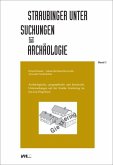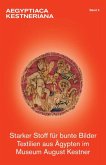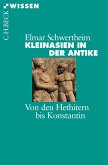Der Mauracher Berg in der Rheinebene wurde um 950 von König Otto I. dem Konstanzer Bischof übertragen. Am Bergfuß liegt der Mauracher Hof mit einer Villa rustica des 2./3. Jh. Die 1155 erstgenannte Kirche diente bis um 1450 als Pfarrkirche und Friedhof für die Bergbausiedlungen des Glottertals. Georadarmessungen und Ausgrabungen von 2011-16 ergaben, daß ein Saalbau mit Rundapsis und Ziegeldach [11./12. Jh., Bau I] einen eckigen Chorabschluss [13. Jh., Bau IIa] und im Spätmittelalter einen Chorturm und Stützmauern [Bau IIb] erhielt. Dieser wurde 1497 durch eine spätgotische Wallfahrtskirche des Hl. Severin ersetzt [Bau III], die 1556 mit der Reformation geschlossen wurde. 68 weitgehend beigabenlose Gräber des 11.-15. Jh. umgaben die Kirche. Drei Gräber des 8.-10. Jh. gehörten zu einem gräflichen Gehöft des Frühmittelalters mit Pfostenbauten, Grubenhäusern und evtl. Spitzgrabenwehr. Wenige Gräber des 16.-17. Jh. folgten nach der Kirchenschließung. Die Anthropologie bezeugt normale Lebensbedingungen der Bevölkerung mit vielen Zahnerkrankungen und gelegentlichem Nahrungsmangel. An Kleinfunden sind eine Totenkrone, Keramik des 8.-17. Jh., Münzen, Militaria, Haushaltsgerät und Handwerksgerät, Kleidungsbestandteile, Schmuckbestandteile und Spielbestandteile zu erwähnen. Around A.D. 950 King Otto I transferred the Mauracher Berg in the Rhine valley to the Bishop of Constance. At the foot of the hill lies the Mauracher Hof farm with a Villa rustica of the 2nd/3rd century. A.D. The church, first mentioned in A.D. 1155, served as a parish church and cemetery for the mining settlements of the Glotter Valley until ca. A.D. 1450. Ground radar and excavations from 2011-16 revealed a basilical church with a round apse and tiled roof [11th/12th century, Phase I] which was given a square choir in the 13th century [Ph. IIa] and a choir steeple and retaining walls [Ph. IIb] in the Late Middle Ages. This was replaced in 1497 by a pilgrim's church to St Severin [Ph. III], which was closed in 1556 due to reformation. 68 graves with hardly any grave goods from the 11th-15th century surrounded the church. Three graves of the 8th-10th century belonged to a comital farmstead of the Early Middle Ages with post buildings, sunken-featured buildings and possibly a ditched defence. Few graves of the 16th-17th century followed after the church had been closed. Anthropology testifies to the normal living conditions of the population with many dental diseases and occasional food shortages. Small finds included a funeral crown, 8th-17th c.entury pottery, coins, military finds, household and craft utensils as well as components of dress, jewellery and games.
Hinweis: Dieser Artikel kann nur an eine deutsche Lieferadresse ausgeliefert werden.
Hinweis: Dieser Artikel kann nur an eine deutsche Lieferadresse ausgeliefert werden.








